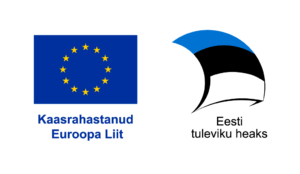Varicose veins is a common condition that affects some 40% of women and 30% of men. With each year, the number of diagnosed cases grows as well. That is to say that today roughly as many as a quarter of the world’s population suffers from varicose veins. With the condition being on the rise, people are more interested in how to prevent varicose veins, what causes them and how to treat them. Below, Dr Aleksandr Detochenko from Estmedica provides some answers.
What factors contribute to the development of varicose veins?
Genetics play the biggest role, which means that the condition often tends to run in the family. Other contributing factors include weight gain, sedentary lifestyles, standing for long periods (e.g. at work) and overall lack of physical activity. Expectant mothers should pay special attention to their legs because venous blood flow is slower during pregnancy, increasing the risk of developing varicose veins. In addition, hormonal fluctuations can relax vessel walls, which is why in some cases varicose veins occur as early as during puberty.
How to prevent varicose veins
There are a number of things you can do to minimise the risk of varicose veins. First, avoid standing and sitting for prolonged periods. Also, there are simple exercises which can provide relief. For example, when lying down, elevate the legs higher than the heart. The benefits you can reap from regular physical activity (such as cycling, swimming, skiing and light, full-body workout routines) should not be underestimated. If you have a sedentary job, get up from the desk at least once an hour to walk around. If you have a predisposition to develop varicose veins, wear compressions stockings: these help direct blood flow to the heart and prevent it accumulating in the veins, reducing swelling in the legs.
When to consult a medical specialist
Once varicose veins have already developed, regular self-monitoring is vital. If soreness, tingling, cramping, prominently visible veins, joint swelling or leg ulcers appear, consult a medical specialist who can recommend a suitable treatment method. The gold standard for varicose vein diagnostics is an ultrasound, which doctors use to check the overall condition of the veins and to prescribe a specific treatment method. Many still consider the removal of varicose veins to be a very unpleasant and painful procedure, but in fact modern methods are quite pain-free. Such procedures are not performed under general anaesthesia and patients are able to leave unassisted immediately.
- Closing veins with laser or radiofrequency energy a.k.a. endovenous ablation
Endovenous ablation is one of the most popular ways of treating varicose veins worldwide. It is used primarily for closing especially large varicose veins. As its name implies, during the procedure varicose veins are closed and blood flow is redirected to other, well-functioning blood vessels. The procedure is minimally painful and is performed under local anaesthesia, so patients are able to leave unassisted immediately. Post-procedure pain is almost non-existent. Complete recovery takes up to two weeks, during which patients should wear compression stockings and avoid working out, using saunas and drinking alcohol. - Surgical removal of varicose veins
A mini-phlebectomy is the surgical removal of varicose veins using tiny incisions of around 2 mm. This method is effective for treating superficial and medium-sized varicose veins. The procedure is performed under local anaesthesia, and the incisions are so small that they heal virtually without scarring. Complete recovery takes some two weeks, during which patients should wear compression stockings. - Foam sclerotherapy
The most convenient and pain-free way of closing varicose veins is using injections of a special foam medication. This method is effective for treating small and medium-sized varicose veins, but is often also used to address cosmetic concerns. The recovery period varies from individual to individual, but on average takes two weeks. Soreness may be experienced for up to five days. During this period patients are advised to wear compressions stockings and avoid direct sunlight. - Closing spider veins with a laser or injections
Spider veins – clusters of fine, bluish blood vessels that have the appearance of a spider web – are more of a cosmetic issue. However, spider veins can develop into varicose veins and thus cause health problems later on. Laser treatment is used to remove these broken capillaries: with this method, tiny blood vessels near the surface of the skin are closed without any damage to the skin itself. Another option is to use radiofrequency energy or injections of a special medical agent that closes veins from the inside. Of all the abovementioned procedures, the recovery time for the last is the shortest, although for the best results patients should wear compression stockings for some time and avoid direct sunlight for at least two months.
